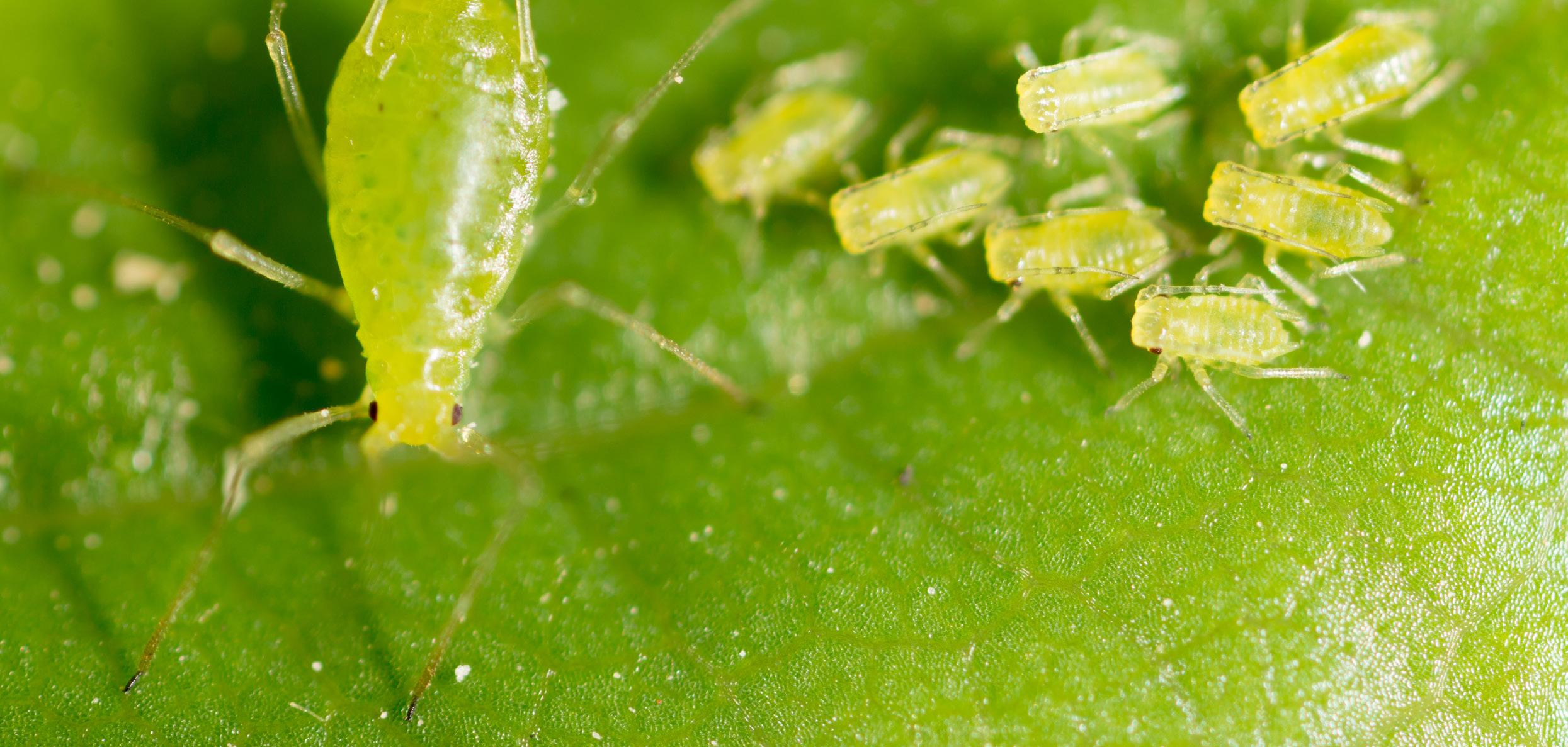Cereal Insecticides
Spring Product Range
Protecting cereal crops from damaging insect pests is essential for achieving consistent yields and preserving grain quality.


Protecting cereal crops from damaging insect pests is essential for achieving consistent yields and preserving grain quality.

Clayton Plant Protection formed in 1991, recently celebrated over 30 years in the Ag industry, and have evolved rapidly to market and distribute a wide range of crop protection products across UK and European markets.
The company is wholly family owned with an excellent reputation in the industry for trust, building established relationships and highquality products with a known provenance.
Clayton is continuously innovating to provide cost effective product options and uniquely, ensures an alternative choice for customers and growers to the larger multinational Ag businesses.


HERBICIDES FUNGICIDES INSECTICIDES PGR’S BIOSOLUTIONS
David O’Mahony Managing Director
Protecting cereal crops from damaging insect pests is essential for achieving consistent yields and preserving grain quality.
Clayton Lanark and Clayton Sparta are two lambda-cyhalothrin based insecticides that deliver effective control against a range of key cereal pests, including Barley Yellow Dwarf Virus (Aphid Vectors), Summer Aphids, Yellow Cereal Fly, Orange Wheat Blossom Midge, and more.
Both products are approved for use on a wide range of cereal crops and offer the flexibility to fit within integrated pest management programmes.
Whether targeting early-season aphid infestations or protecting ears from later pests, Clayton Lanark and Clayton Sparta help safeguard crop potential from establishment to harvest.
Why Use Clayton Insecticides?
• Fast-acting control of key insect pests in cereal crops
• Flexible use across winter and spring wheat, barley, oats, and durum wheat
• Proven efficacy against aphid vectors of BYDV, grain aphids, yellow cereal fly, orange wheat blossom midge, and gout fly
• Supports integrated pest management (IPM) strategies with targeted timing and maximum application intervals.

SPRING INSECTICIDES - PRODUCT OVERVIEW
CLAYTON LANARK™
CS formulation, 100 g/l Lambda-cyhalothrin
CLAYTON SPARTA™
EC formulation, 50 g/l Lambda-cyhalothrin
An ideal choice for the control of insect pests in cereal crops.
Active Ingredients: 100 g/l lambda-cyhalothrin
Use Rate & Timings:
CS Formulation Capsule Suspension
Winter and Spring Wheat and Barley, Durum Wheat
Maximum individual dose 50 (ml product/ha)
Maximum total dose 200 (ml/product/ha/crop)
Latest time of application: Before late milk stage (GS 77)
Winter and Spring Oats
Maximum individual dose 50 (ml product/ha)
Maximum total dose 200 (ml/product/ha/crop)
Latest time of application: Before watery ripe stage (GS 71)
The following minimum intervals between applications must be observed: 14 days for wheat, barley, oats. A maximum number of 4 applications per crop must not be exceeded.
Target Pests: Aphids, Yellow Cereal Fly, Orange Wheat Blossom Midge. See product label for full list of pests.

An ideal choice for the control of insect pests in cereal crops.
Active Ingredients: 50 g/l lambda-cyhalothrin
Use Rate & Timings: Wheat, Barley
Maximum individual dose 100 (ml product/ha)
Maximum total dose 400 (ml/product/ha/crop)
Latest time of application: Before late milk stage (GS 77)
Oats
Maximum individual dose 100 (ml product/ha)
Maximum total dose 400 (ml/product/ha/crop)
EC Formulation Emulsifiable Concentrate
Latest time of application: Before watery ripe stage (GS 71)
The following minimum intervals between applications must be observed: 14 days for wheat, barley, oats. A maximum number of 4 applications per crop must not be exceeded.
Target Pests: Aphids, Yellow Cereal Fly.
See product label for full list of pests.

WINTER WHEAT, WINTER BARLEY, WINTER OATS AND DURUM WHEAT
September-sown cereals (High-risk situations):
• Apply a routine spray between mid and late October if BYDV is a known issue on the farm or in the local area.
• If aphids are detected earlier, treat immediately.
• In mild winters or high-pressure scenarios (e.g. crops following grass leys or weedy stubble), repeat applications may be necessary.
• These situations should be regarded as high risk due to potential direct aphid transfer.
Use rates & application:
Clayton Lanark: 50 ml/ha, Clayton Sparta: 100 ml/ha
October onwards-sown cereals
Follow low-risk recommendations.
Low-risk areas (based on monitoring):
• Apply only when BYDV risk is high, supported by:
• Aphid monitoring
• Specialist agronomy advice
• If aphids are present and/or risk is confirmed, treat immediately.
Spring application:
• Where no earlier application has been made, treatment can still be effective up to GS 32 if BYDV-carrying aphids are present.
Water volume: 200 L/ha
WINTER AND SPRING, WHEAT, BARLEY AND OATS AND DURUM WHEAT
Timing: optimum timing for application is after ear emergence (GS 59). The latest time of application on wheat and barley is before GS 77 and on oats is before GS 71. Apply according to official thresholds.
Notes: When Clayton Lanark is used for aphid control on the ear, some reduction of aphids on the flag leaf will occur.
Use rates & application:
Clayton Lanark: 50 ml/ha, Clayton Sparta: 100 ml/ha
WINTER WHEAT
Water volume: 200-300 L/ha
Timing: Apply at egg hatch, usually from late January onwards depending on the season. Early emerged crops are most at risk. Sprays applied for the control of BYDV will also give some control.
Use rates & application:
Clayton Lanark: 50 ml/ha, Clayton Sparta: 100 ml/ha
Water volume: 200L/ha
WINTER AND SPRING WHEAT
Clayton Lanark can provide reduction in damage in susceptible crops associated with this pest.
Timing: Monitoring of adult midge activity is essential to determine the optimum time for treatment. Pheromone traps in crop should provide the best information on when to spray. Apply immediately the threshold numbers of adult egg laying midges are found.
Crops between ear emergence and the start of flowering (GS 51-59) can be vulnerable to attack, those at GS 55-57 are most susceptible. To achieve the best results Clayton Lanark should be used before large numbers of eggs are laid, as the product is active against adults. Late application is less likely to be effective and should be avoided. For further information on orange wheat blossom midge, including details on pest thresholds consult your local qualified agronomist.
Use rates & application:
Clayton Lanark: 50 ml/ha
WINTER AND SPRING WHEAT
Water volume: 200 L/ha
Timing: Inspect crop regularly from the one leaf stage and apply when the first eggs are laid. For maximum effect, treatment must be made before the majority of eggs hatch. Efficacy will be reduced if treatment is applied when plant invasion has started.
Use rates & application:
Clayton Lanark: 50 ml/ha
Water volume: 200L/ha

CLAYTON SPARTA™
EC formulation, 50 g/l lambda-cyhalothrin
CLAYTON LANARK ™
CS formulation, 100 g/l lambda-cyhalothrin
For further information on products in this guide and our full product range please click on the button to visit our website. Find out more

*Information in this product guide does not constitute a recommendation, it is for guidance only. Up-to-date information can be found on our website claytonpp.com. Brand names used in this update are trademarks of Clayton Plant Protection and of other manufacturers, in which proprietary rights may exist. Use plant protection products safely. Always read the label and product information before use. info@claytonpp.com www.claytonpp.com